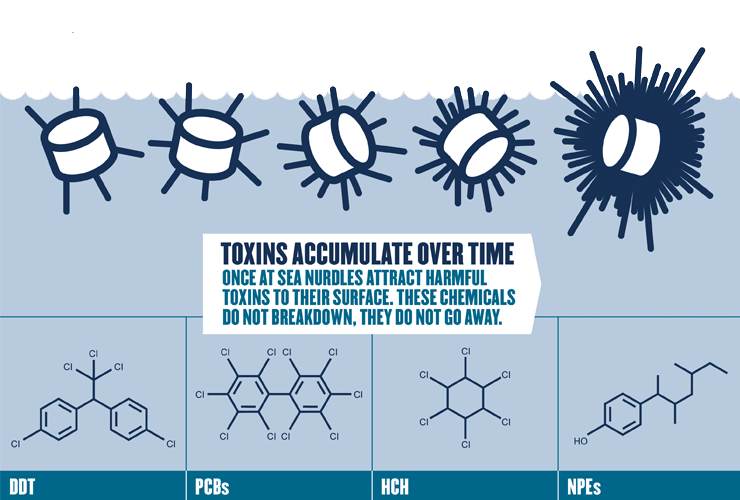Although plastic polymers themselves are not toxic, nurdles can be associated with harmful chemicals.
Once at sea, nurdles and other plastics attract other contaminants, known as Persistent Bioaccumulating Toxins (PBTs) to their surface. PBTs are industrial chemicals that can accumulate in animal and human tissue causing long term damage. Plastics act like a sponge for these toxins and can concentrate them to levels millions of times higher than the surrounding sea water.
Most PBTs are now banned due to the risks they pose to the environment or human health. Although current manufacture has been reduced, these chemicals continue to persist in the marine environment.
In addition, plastics can contain additives used to give them certain characteristics, such as a colour, reduced flammability, or increased flexibility. For example, by weight, up to 75% of PVC can be made up of additives . Additives of environmental concern include phthalates, Bisphenol A (BPA) and organotins . These chemicals are present in some pellets and may leach out of the plastic once in the environment.
Roll over the chemicals to find out more...
